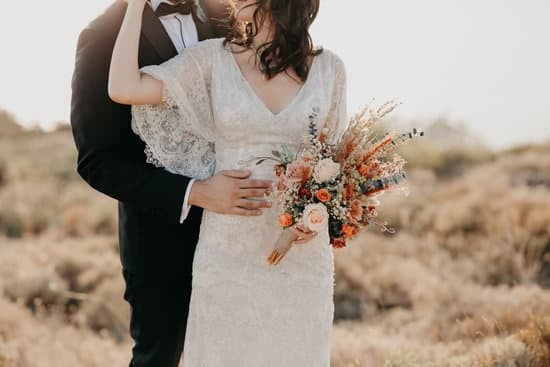The tradition of exchanging wedding bands dates back centuries and has been a symbol of love and commitment in many cultures. The history of wedding bands and finger traditions is fascinating, with different cultures having their own unique customs when it comes to wearing these meaningful rings. From ancient Egypt to medieval Europe, the placement of the wedding band on a specific finger has varied over time.
In today’s globalized society, different cultures may have varying traditions when it comes to which finger to wear a wedding band on. While some follow traditional Western customs of wearing the ring on the fourth finger of the left hand, others may have their own cultural practices. Understanding these differences can help couples navigate through choosing the right finger for their wedding band based on their unique cultural backgrounds and beliefs.
History of Wedding Bands and Finger Traditions
The history of wedding bands and the traditions surrounding which finger to wear them on is a fascinating subject that spans different cultures and time periods. The practice of exchanging rings as a symbol of love and commitment can be traced back to ancient Egypt, where couples would exchange rings made from natural materials such as reeds and hemp.
The circular shape of the ring was believed to symbolize eternity, with no beginning or end, making it the perfect representation of a couple’s everlasting love for each other.
As the tradition of exchanging wedding bands spread throughout the world, so did the customs regarding which finger they should be worn on. In many Western cultures, including the United States, the wedding band is traditionally worn on the fourth finger of the left hand, also known as the “ring finger.” This tradition dates back to ancient Rome, where it was believed that this particular finger had a vein that was directly connected to the heart, symbolizing love and devotion.
However, in other cultures such as India and some Eastern European countries, the right hand is favored for wearing wedding bands. In India, for example, it is common for married women to wear their wedding bands on their right hand rather than their left.
In some East Asian countries such as China and Japan, both men and women often wear their wedding bands on their right hands. These cultural differences highlight the fact that while the symbolism behind wedding bands may be universal, customs regarding which finger to wear them on can vary widely from one culture to another.
In modern times, many couples are choosing to personalize their wedding band traditions by selecting alternative fingers for wearing their rings. Some opt for matching tattoos instead of traditional bands while others follow new trends like wearing multiple stacking rings or utilizing non-traditional materials for their rings. These evolving customs reflect a growing desire for couples to express their unique love stories through personalized symbols of commitment.
Different Cultures, Different Finger, Same Symbol
Wedding bands have been a symbol of love and commitment in various cultures for centuries. While the tradition of exchanging rings is widespread, the finger on which the wedding band is worn can vary greatly depending on cultural customs. In Western cultures, it’s customary to wear the wedding band on the left-hand ring finger, but in other parts of the world, such as India and Spain, the right-hand ring finger is more common.
In traditional Hindu culture, for example, it’s customary for women to wear their wedding band on the left hand while men wear it on the right hand. In contrast, in some Eastern European countries like Russia and Bulgaria, the wedding band is worn on the right hand both by men and women.
The variation in finger placement for wedding bands across different cultures serves as a reminder that symbols of love and commitment are universal but can carry different meanings depending on where you are in the world. Despite these differences, one thing remains constant – regardless of which finger it’s worn on or how it’s designed, a wedding band serves as a timeless representation of everlasting love and dedication.
| Wedding Band Tradition | Cultural Context |
|---|---|
| Left-hand ring finger | Common in Western cultures |
| Right-hand ring finger | Seen in countries like India and Spain |
| Variations within cultures | Different traditions for men and women |
Choosing the Right Finger for Your Wedding Band
The choice of which finger to wear a wedding band on is a tradition that varies widely across different cultures and time periods. In some cultures, the left ring finger is the traditional choice for wearing a wedding band, as it is believed to be directly connected to the heart by the vein of love.
This tradition can be traced back to ancient Roman times, where they believed this vein, called the “vena amoris,” ran from the fourth finger of the left hand to the heart.
However, in many Western cultures today, including the United States and the United Kingdom, it is more common for both men and women to wear their wedding bands on the fourth finger of their left hand. This practice became popular in Christian cultures and has been widely adopted as a symbol of marriage in Western society.
In some Eastern European and South American countries, it is more common for couples to wear their wedding bands on their right hand instead. This tradition is also seen in some Jewish communities, where the right hand holds greater significance than the left. Ultimately, there is no right or wrong answer when it comes to choosing which finger to wear your wedding band on – it all depends on personal preference and cultural traditions.
| Country or Culture | Traditional Finger for Wedding Band |
|---|---|
| United States/United Kingdom | Fourth finger of left hand |
| Russia/Poland/Colombia | Right hand |
| Ancient Rome | Left ring finger (vena amoris) |
Style and Design Options for Wedding Bands
When it comes to choosing a wedding band, there are numerous style and design options to consider. Whether you prefer a classic, traditional look or a more modern and unique design, the possibilities are endless.
Classic Metal Bands
For couples who appreciate timeless elegance, classic metal bands such as gold, platinum, or silver are popular choices. These bands can be simple and understated, or they can feature intricate engravings for added detail.
Diamond and Gemstone Bands
For those looking for a touch of sparkle and color, bands featuring diamonds or gemstones are a stunning option. Whether you prefer a band with a single center stone or multiple stones set in an eternity style, there are endless choices to suit your personal taste.
Mixed Metal Bands
For a contemporary twist on the traditional wedding band, mixed metal bands have become increasingly popular. Combining different metals such as rose gold and white gold or yellow gold and platinum creates a unique and eye-catching look.
No matter what finger wedding band you choose to wear, the style and design options available allow you to find the perfect symbol of your love and commitment. From classic metal bands to diamond and gemstone bands to mixed metal bands, there is something for every couple’s unique preferences.
The Etiquette of Wearing a Wedding Band
When it comes to wearing a wedding band, there are certain etiquettes and traditions that many people follow. Here are some general guidelines on the etiquette of wearing a wedding band:
- Which hand? In most Western cultures, the wedding band is traditionally worn on the fourth finger of the left hand, also known as the “ring finger.”
This tradition dates back to ancient Roman times when it was believed that the vein in the ring finger, called the “vena amoris” or “vein of love,” was connected directly to the heart. However, in some Eastern European and South American countries, it is common to wear the wedding band on the right hand. - When to wear it? After exchanging vows during the wedding ceremony, it is customary for both partners to immediately start wearing their wedding bands. Some may choose to wear their engagement ring and wedding band together on the same finger, while others may opt to wear them separately on different hands.
- Symbolism and significance: Wearing a wedding band symbolizes commitment and unity in marriage. It signifies that you are taken and committed to your spouse. It’s often considered bad manners or inappropriate for married individuals not to wear their wedding bands in public, especially if they are out without their spouse.
Ultimately, the etiquette of wearing a wedding band varies across different cultures and personal preferences at times. It’s important for couples to discuss and decide together what feels right for them when it comes to wearing their wedding bands.
Alternatives to Traditional Wedding Bands
For couples who are looking for something different than the traditional wedding band, there are several alternative options to consider. From non-traditional materials to unique designs, there are plenty of ways to make your wedding band stand out.
Non-Traditional Materials
One popular alternative to the traditional gold or platinum wedding band is a ring made from a non-traditional material. Tungsten, titanium, and even wood are becoming increasingly popular choices for wedding bands. These materials offer a unique look and can be more budget-friendly than traditional metals.
Unique Designs
Another alternative to the classic wedding band is to choose a ring with a unique design. This could include a band with intricate details, a twisted or braided design, or even a non-circular shape. Some couples opt for matching sets that complement each other but don’t necessarily match exactly.
Gemstone Bands
For couples who want something truly distinctive, choosing a wedding band that features gemstones can be an eye-catching option. Whether it’s diamonds, sapphires, or other colorful stones, adding gemstones to a wedding band adds an extra element of sparkle and personality.
When considering alternative options for your wedding band, it’s important to think about what will best suit your lifestyle and personal style. Whether you choose non-traditional materials, unique designs, or gemstones, the most important thing is that your wedding bands reflect your love and commitment to each other in a way that is meaningful to both of you.
Personalizing Your Wedding Band
In conclusion, the significance of the wedding band transcends time and culture, symbolizing the timeless commitment between two individuals. The history of wedding bands and finger traditions reveals the deep-rooted significance of this symbol in various cultures around the world. Regardless of cultural differences, the sentiment behind wearing a wedding band remains the same – a visible declaration of love and commitment.
When choosing the right finger for your wedding band, it’s important to consider personal preference, cultural traditions, and practicality. Whether it’s a traditional style or a modern design, there are endless options to suit every individual’s taste. Additionally, personalizing your wedding band through engraving and customization offers a unique way to make this symbol even more special.
Ultimately, whether you choose to wear your wedding band on your left ring finger like in many Western cultures, or follow a different tradition altogether, what matters most is the love and commitment represented by the ring itself. With so many options for personalization and customization available, couples can truly make their wedding bands their own.
No matter which finger you choose for your wedding band, the sentiment remains unchanged – a promise of love and devotion that will last a lifetime.
Frequently Asked Questions
Is the Wedding Ring on the Left or Right Finger?
The wedding ring is traditionally worn on the left ring finger. This custom dates back to ancient Egypt, where it was believed that a vein connected this finger directly to the heart.
What Does It Mean When a Man Wears a Wedding Band on His Right Finger?
When a man wears a wedding band on his right finger, it can have various cultural or personal meanings. In some Eastern European and Scandinavian countries, men wear their wedding bands on the right hand. Some men may also opt for the right hand if they are left-handed and want to protect their ring from damage.
What Finger Is for Engagement Ring?
The engagement ring is typically worn on the fourth finger of the left hand, known as the “ring finger.” This practice also stems from ancient beliefs about a direct vein connection to the heart, representing love and commitment in Western cultures.

I have been involved in marriages for over 20 years helping couples and singles understand more about them.





